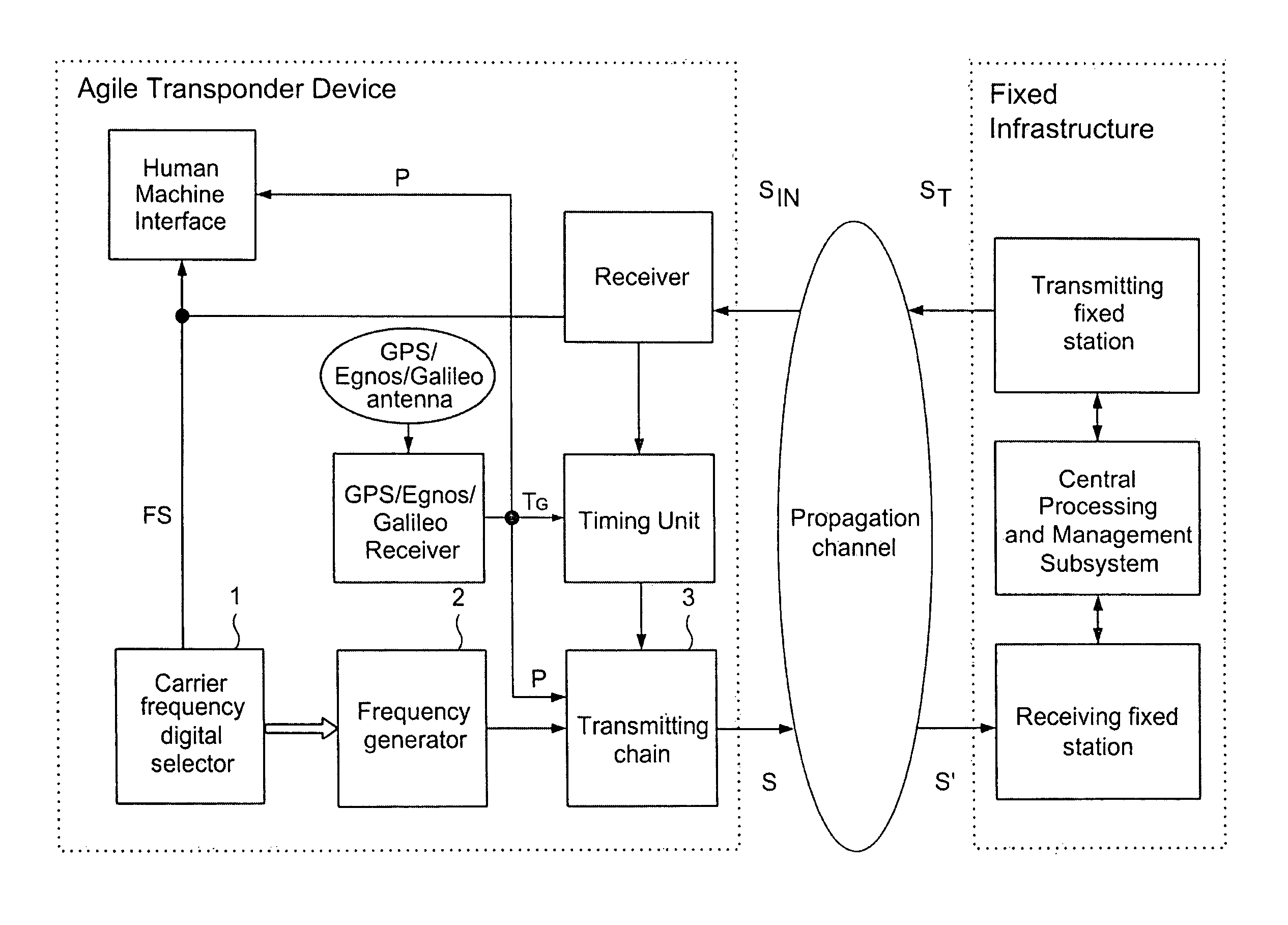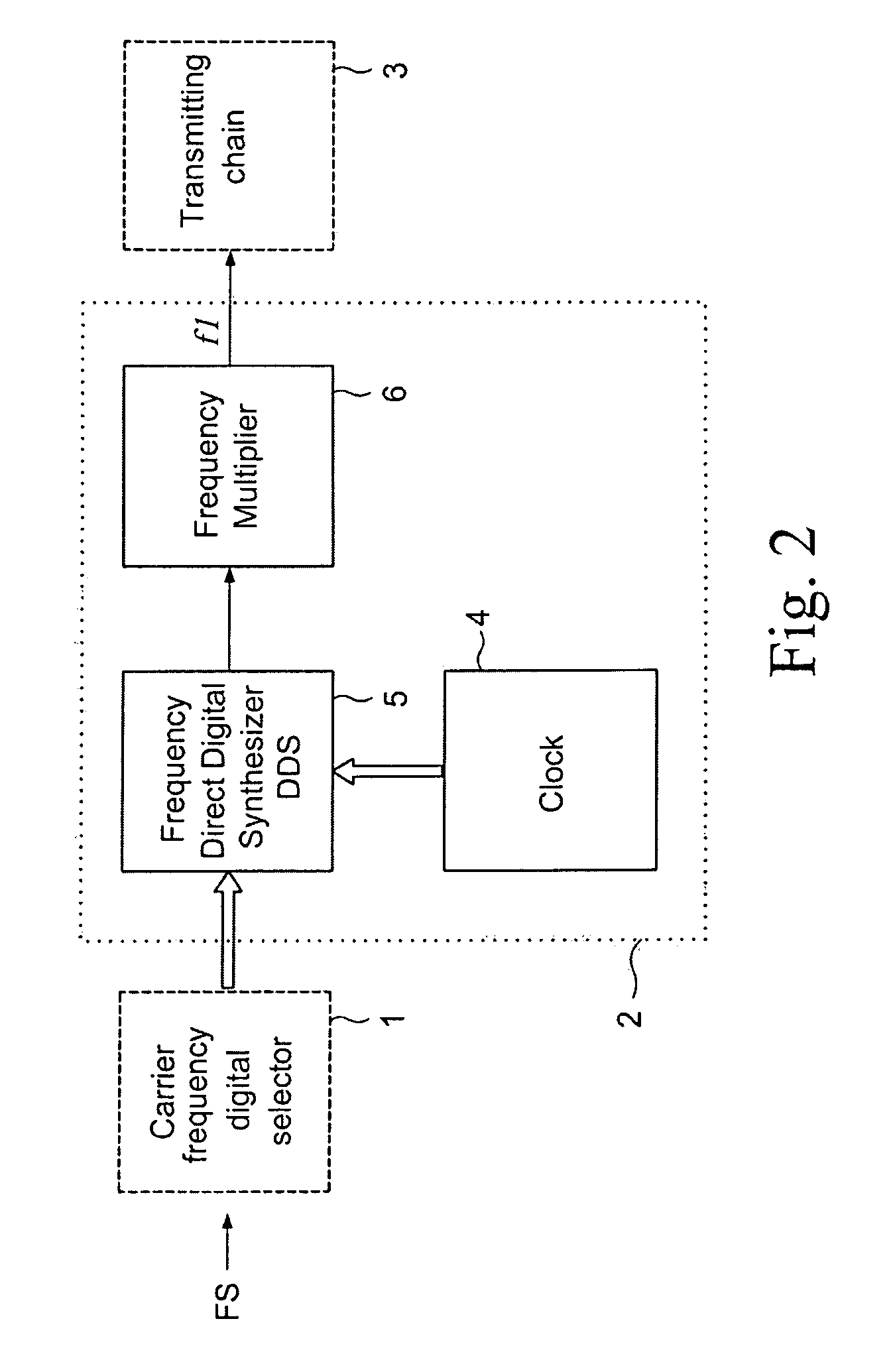High-capacity location and identification system for cooperating mobiles with frequency agile and time division transponder device on board
a technology of frequency agile and identification system, which is applied in the direction of measurement device, radio wave reradiation/reflection, using reradiation, etc., can solve the problems of inability to analyze, inability to detect, and inability to detect, etc., and achieve the effect of improving the operation
- Summary
- Abstract
- Description
- Claims
- Application Information
AI Technical Summary
Benefits of technology
Problems solved by technology
Method used
Image
Examples
Embodiment Construction
[0042]This invention is a system capable of locating and identifying a large number (e.g. thousands) of vehicles or aircraft, or any mix of vehicles and aircraft, being each vehicle or aircraft equipped with a suitable transponder. It is also capable of locating and identifying a large number (e.g. thousands) of vessels. This invention allows cooperating mobiles of civil traffic (ground vehicles, aircraft) to be located and identified by Multilateration (MLAT) and Automatic Dependent Surveillance-Broadcast (ADS-B) techniques using the Secondary Surveillance Radar (SSR) signals in high traffic situations, such as those of large airports. Standard messages, transmitted by the mobile on the downlink channel, i.e. to a set of fixed receiving stations, and including the identification code, permit the location of the mobile by multiple time measurements (Multilateration) from a number of the set of fixed receiving stations; when the message contains the position (GPS and, later, Galileo ...
PUM
 Login to View More
Login to View More Abstract
Description
Claims
Application Information
 Login to View More
Login to View More - R&D
- Intellectual Property
- Life Sciences
- Materials
- Tech Scout
- Unparalleled Data Quality
- Higher Quality Content
- 60% Fewer Hallucinations
Browse by: Latest US Patents, China's latest patents, Technical Efficacy Thesaurus, Application Domain, Technology Topic, Popular Technical Reports.
© 2025 PatSnap. All rights reserved.Legal|Privacy policy|Modern Slavery Act Transparency Statement|Sitemap|About US| Contact US: help@patsnap.com



